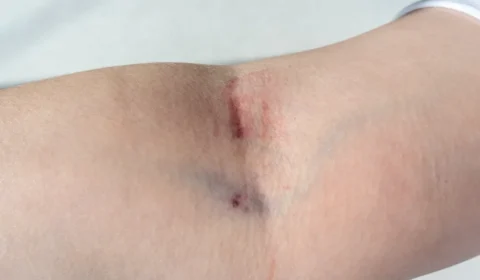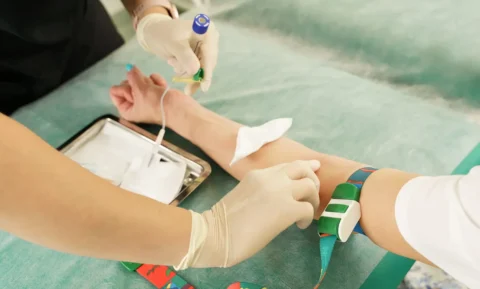Working adults often complain about foot pain, thanks to long and tiring walks during the day. Some doctors use Sculptra Aesthetic as a form of treatment for foot pain. This injectable was first approved for cosmetic treatments in 2014 before being used for other purposes. It’s safe and effective for the face, but foot pain treatment remains off-label usage.
So where can you get training to be a certified Sculptra specialist? If you’re interested in learning about the administration of Sculptra Aesthetic dermal fillers to the feet, you need to take courses and training. One-day classes and long-term learning sessions are available from qualified training institutions.
Where to Get Training for Sculptra
Sculptra is an FDA-approved injectable product used for treatment of wrinkles. Also used to treat the loss of fat pads, Sculptra can also help with foot pain. Some providers theorize that Sculptra injections provide additional cushioning to the feet without the need for surgery. This is because these pads help support body weight when standing or walking, and prevent the feet from feeling too much pain and vulnerability to trauma.
Many training institutions provide Sculptra courses to interested individuals. Some offer them in one-day online sessions, while others spread out the lessons over a few classes. These training courses include lectures, live demonstrations, and assessments.
One-Day Courses
These courses are facilitated by board-certified physicians immersed in Sculptra. Depending on the level of the course, both novice and experienced injectors can undergo the class. The course is similar to a seminar covering the basics of Sculptra. Some of the topics covered in the one-day course include:
- Basics of aesthetic injection
- Patient needs assessment
- Advanced patient care
- Off-label use for Sculptra
One-day courses combine lecture videos and presentations with live demonstrations. These demonstrations feature physicians injecting the fillers onto a model, carefully showing the proper techniques. Precautionary measures, such as medical history taking and patient needs assessment, are also included in the lectures. You can also expect an extensive discussion on aftercare guidelines and safety considerations.
These short courses typically include a certificate of completion. You will be asked to perform a hands-on demonstration before being provided the certificate. Also included with a one-day package are manuals and digital resources that you can access even after the session.
Since the use of Sculptra for foot pain is off-label, you’ll have to look for a course that includes it in their discussion outline. If you work in a hospital or healthcare facility, you can inquire from dermatologists or specialists that have experience with Sculptra. They may have access to associations or groups that hold routine one-day courses across the country.
The latest treatment advancements are often incorporated into the next iteration of the course. If you prefer one-day courses, you should take another one after a couple of years. Updated training can help you acquire skills in operating new hardware and equipment.
Longer Didactic Sessions
Longer courses last for about 2 to 4 weeks. These are composed of theory lectures that discuss health issues treatable through Sculptra. Physicians serve as the instructors, with classes carefully spread out over the allotted period. The first sessions focus on the basics of Sculptra, such as the chemical composition, devices, and indications for use. Patient safety is also a chief topic for the lectures.
The theoretical and demonstrative aspects of these courses are content-focused. However, these courses can also be good for those who want more formal training for Sculptra. The lectures are often very comprehensive and go into topics that are only glossed over in single-day courses. Some institutions also offer additional sessions that include in-class workshops and supervised injection practice.
Some of the topics covered in long-courses include:
- Human anatomy review
- Patient needs assessment
- Specific Sculptra injection techniques
- Off-label treatments
- Management of potential side effects
- Live demonstrations and workshops
- Supervised practice sessions
- Marketing and business plans for centers
- Reference texts
Since didactic-focused courses take place over a few weeks, they also cover other treatment techniques. Laser treatments, microneedling, Botox cosmetic injections, and PRP are all common topics bundled together in long courses. These are typically packaged as “aesthetic training” courses and cost more than one-day sessions. They also come with certificates and manuals.
Ideal Training Candidates
Both one-day courses and longer didactic sessions are offered in many aesthetic training centers. Most institutions prioritize medical and healthcare professionals over other clients. As a result, many students are nurses, physician’s assistants, or doctors.
If you’re interested in Sculptra training, you should look into your state’s regulatory approvals. You may need to undergo prior education and licensing as a nurse practitioner or plastic surgeon first.
Basics of Sculptra
Training courses for Sculptra go beyond the basics of treatment. The active ingredient in Sculptra is poly-L-lactic acid (PLLA), a safe synthetic chemical that stimulates the body’s collagen production.
Sculptra is mostly used to treat deep facial lines, creases, static wrinkles, folds, and other signs of aging. Additionally, it’s also used to reintroduce facial fat to the cheeks. Sculptra is primarily known for its cosmetic purposes, and treatment for foot pain is off-label usage. However, these are also covered in the latter parts of many training programs.
Chemical Composition
Sculptra Aesthetic is an injectable suspension composed of microscopic particles of PLLA. It also contains amounts of carboxymethylcellulose (USP), non-pyrogenic mannitol (USP), and sterilized water. Each vial of Sculptra Aesthetic contains 367.5 mg of the substance. Before use, the vial must be reconstituted by adding 5ml of sterile water for injection.
Indications for Use
The indications for use are a crucial talking point in all training courses. You will be taught how to prepare and assess your potential clients, including medical history taking. It’s important to check for any underlying illnesses or allergies that could interfere with the injectable.
During the treatment session, you must find the target areas on the patient’s skin. Before injecting, you must disinfect the area first. In the training courses, you’ll also be taught about the appropriate anesthetic to use in the procedure. The injection technique to be used depends on the number of target areas.
Warnings and Precautions
Training also encompasses the warnings and precautionary measures for patients. All procedures should be performed within the hospital or doctor’s office—any at-home procedures are not permitted in most states. Pre-testing is not necessary, although it might help you check if the patient is the right match for the injectable filler.
During the theoretical part of your training, possible contraindications will also be covered. The current guidelines show that Sculptra is incompatible with skin that has the following:
- Cold sores
- Cysts
- Rashes
- Skin discoloration
Possible Side Effects
Besides the contraindications, your lecturers will also discuss the most common side effects after Sculptra treatment. These are generally minor, but you can refer to your resource materials for specific aftercare instructions. You may also ask your lecturers about other side effects on the feet not mentioned below:
- Bumps around the injection sites
- Mild pain
- Redness and skin discoloration
Since the target areas around the feet are deeper under the skin, these side effects may manifest more often in procedures that you’ll administer. Discoloration and bumps are closely associated with deep injections.
Qualifications for Sculptra Specialists and Centers
Those who are already licensed in their field of healthcare (medical doctors, nurses, etc.) usually don’t need an additional certification. For your potential clients’ reference, it helps to have before-and-after photos of treatments around your office.
State Licensing Laws
Some states require injectors in wellness spas and health centers to have an aesthetician license. Providers should also comply with any business requirements in the area, such as tax and business permits. Depending on local state guidelines, you may have to secure separate permits for other agencies.
All practitioners working in the center should be qualified. If you’re offering dermal filler feet injections, you must have the skills necessary to administer the operation. Injectors that aren’t licensed nurses or doctors should be supervised in all procedures.
FDA Approvals
Sculptra has been approved for widespread use since 1999. In 2004, it was cleared for use for lipoatrophy treatment. Additionally, the FDA officially allowed Sculptra for wrinkle treatment in 2014.
Currently, there are no official FDA approvals for the use of Sculptra on the feet. Some doctors contest using the chemical on the feet due to the lack of extensive clinical trials. During your training, you can consult physicians that have used Sculptra for off-label purposes. There are conferences that have panel discussions about using Sculptra for other body parts besides the face.
Get Quality Medical Supplies and Online Aesthetic Courses at FACE Med Store
Sculptra is just one of the many medical items used in aesthetic centers and clinics. It’s important to have a high-quality supplier for your regular procedures. At FACE Med Store, we offer a wide range of medical and wellness supplies. These are all competitively priced without sacrificing durability and quality.
We’ve also launched online aesthetic courses on our site, available for CME credits. These cover a wide range of topics, including injectables, medical devices, mesotherapy, and more. If you’re interested, feel free to browse our catalog at our website. You may also send us an email at info@facemedstore.com.






